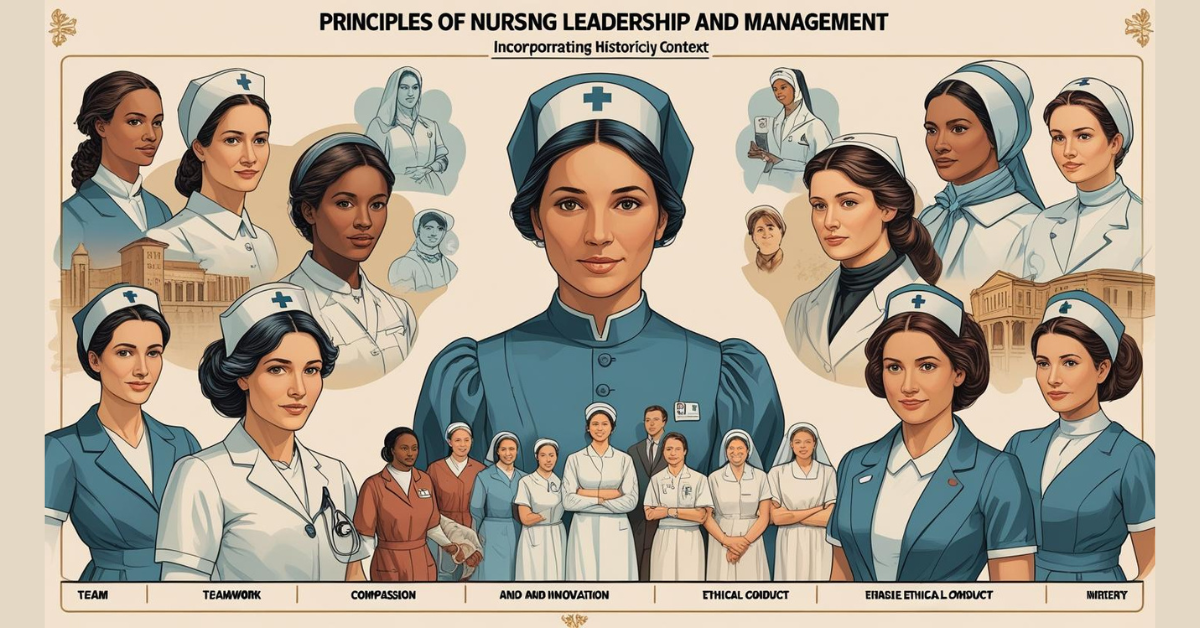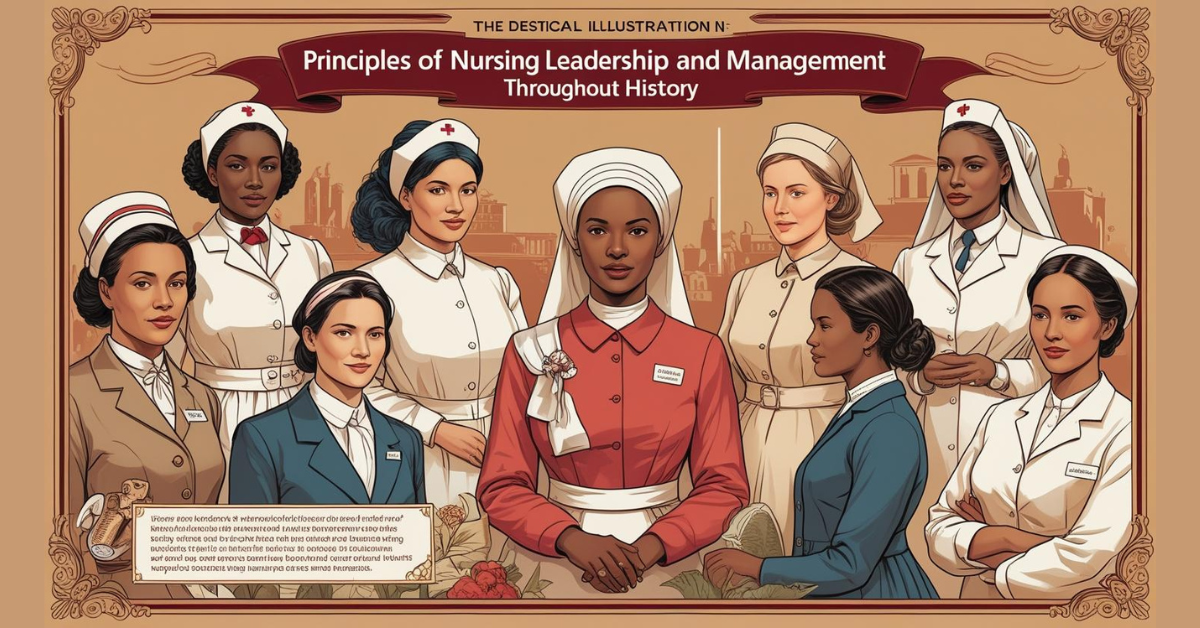What are Principles of Nursing Leadership and Management With Historical Development. The principles of leadership in nursing are to promote safe, efficient, quality, cost-effective and patient-focused care.
The Principles of Nursing Leadership and Management With Historical Development
Nursing leadership and management positions are those held by nursing professionals who direct other nursing staff, oversee the organizational structure of medical processes and lead nursing teams in providing patient care.
Theories and Principles of Nursing Leadership and Management
Because nurses embody the largest number of professionals in health care, they are most often the closest to the patient and therefore offer a unique perspective of the entire system of care surrounding the patient. This places nurses in a prime position to be leaders. The Institute of Medicine (IOM) report The Future of Nursing: Leading Change, Advancing Health (2011) contended that strong nursing leadership is critical to addressing the demands of the increasingly complex health-care system.
Further, “the nursing profession must produce leaders throughout the health care system, from the bedside to the boardroom, who can serve as full partners with other health professionals and be accountable for their own contributions to delivering high-quality care while working collaboratively with leaders from other health professions” (p. 221).
To navigate the evolving health-care landscape, all nurses must recognize and embrace their leadership responsibilities and understand nursing leadership competencies. All nurses, regardless of their positions, must develop leadership skills with an emphasis on effective decision making, initiating and maintaining effective working relationships, using respectful communication, collaborating on inter-professional and intra-professional teams, coordinating care effectively, and developing delegation skills and conflict resolution strategies (American Association of Colleges of Nursing [AACN], 2008).
Additionally, all nurses are managers in some way. They may be in a formal management position or managers at the bedside. Nurses in formal management positions are typically in a hierarchical position with subordinates. In this role, they focus on the following: order, consistency, and planning; organizing and budgeting, establishing and enforcing rules; and taking corrective action.
The responsibilities of managers at the bedside include the following: managing care transitions; actively participating on inter-professional and intra-professional teams; identifying system issues; and developing working skills in delegation, prioritization, and overseeing patient care (AACN, 2008, p. 35). Leadership and management, in fact, are not interchangeable. In the best scenario, a manager is a true and effective leader; however, an excellent leader may not have any management responsibilities within an organization.
Although there are many similarities between leadership and management—both involve the direction and influence of others, and both entail the accomplishing of tasks and goals of an organization—there are significant differences. Leadership is a process of influencing others through effective relationship skills, whereas management is a formal position with specific functions. Ideally, a nurse can be both a leader and a manager simultaneously. In addition, leadership and management competencies, mentoring, and self-awareness will be discussed.
Historical Development Of Leadership
Established in fields such as business, psychology, sociology, and anthropology, management theories were developed as a means to enhance productivity in business (Marquis & Huston 2015), with leadership theories growing from the science of management. Historical perspectives on leadership and management are still relevant today because modern theories of leadership incorporate some of the ideas first introduced almost a century ago. Nursing has traditionally borrowed various theoretical ideas from medicine, psychology, sociology, and business, with leader ship theories developed from these various contributions.
Trait Theories
One early leadership theory from the 19th century was “The Great Man Theory,” focused on the traits of a leader and noting that certain men were born leaders (Raelin, 2015). The focus of leadership research during this time involved the study of popularly identified great leaders. The goal was to identify what traits these individuals possessed, with the aim of being able to identify new potential leaders more quickly.
Leadership Styles
The next phase in the development of leadership theories (1940 to 1960) concentrated on the identification of styles of leadership. The emphasis of study was on what leaders did, rather than on innate traits, and these theories were also known as behavioral theories (Raelin, 2015). These theories centered on how leaders and managers conducted themselves. Primary leadership styles were identified as autocratic (authoritarian), democratic (participative), and laissez-faire (Lewin, 1951).
Situational and Contingency Leadership Theories
From 1950 to 1970, building on behavioral theories, researchers began to identify new contributing factors to leadership theories. One idea that evolved at this time was that situational factors contributed to the leadership style one embraced. This approach considers that a leader may be effective in certain situations and less effective in others. Another model, contingency leadership, involved a complex process of evaluating a leader’s style, the relationship with followers, and the task to be completed (Fiedler, 1967).
The principles of nursing leadership and management focus on the guidance and supervision of nursing staff to ensure high-quality patient care. Key principles include fostering a culture of excellence, promoting teamwork, and advocating for patient advocacy. Historical trends show a transition from task-oriented management to a more people-centered approach, emphasizing leadership styles such as transformational leadership and servant leadership.
Principles of nursing leadership and management
Commitment to excellence
Continuous improvement, high standards, and the pursuit of optimal patient outcomes.
Building a culture of service
Creating an environment where staff value patients and their families, and where teamwork is a priority.
Effective communication
Open and transparent communication among all levels of staff is essential for coordinating care and resolving conflicts.
Accountability
Leaders must be accountable for their actions and delegate responsibilities appropriately to ensure all staff understand their roles and responsibilities.
Ethical Aspects
Nursing staff must adhere to ethical principles such as autonomy, beneficence, justice, and non-maleficence when making decisions about patient care.
Evidence-Based Practice
Leaders must promote the use of evidence-based practices to ensure safe, effective, and timely care.
Professional Development
Leaders must support the continuing professional development of their staff and encourage them to expand their skills and knowledge.
Patient Advocacy
Nursing staff must advocate for their patients and ensure their needs and wishes are respected.
Delegation and Supervision
Nursing staff must be able to delegate tasks effectively and provide adequate supervision to ensure all tasks are completed safely and efficiently.
Critical Reflection
Nursing staff must be able to critically reflect on their practice, identify areas for improvement, and develop strategies to enhance their leadership skills.
Historical Development
Early Era
Early nursing leadership tended to be task-oriented and hierarchical, focusing on efficiency and control. Scientific
Management Era
The influence of scientific management principles led to a focus on standardization and efficiency in nursing.
Human Relations Era
A better understanding of human behavior led to a more human-centered approach that recognized the importance of teamwork and communication.
Present
Modern nursing leadership emphasizes transformational and servant leadership and focuses on motivating and empowering staff, fostering a positive work environment, and promoting patient-centered care.
Evolution of Leadership Theories
Leadership theories have evolved from the Great Man Theory (leaders are born) to trait theory, behavioral theory, contingency theory, and interaction theory, each of which contributes to a deeper understanding of leadership principles.
Read More:
https://nurseseducator.com/didactic-and-dialectic-teaching-rationale-for-team-based-learning/
https://nurseseducator.com/high-fidelity-simulation-use-in-nursing-education/
First NCLEX Exam Center In Pakistan From Lahore (Mall of Lahore) to the Global Nursing
Categories of Journals: W, X, Y and Z Category Journal In Nursing Education
AI in Healthcare Content Creation: A Double-Edged Sword and Scary
Social Links:
https://www.facebook.com/nurseseducator/
https://www.instagram.com/nurseseducator/
https://www.pinterest.com/NursesEducator/
https://www.linkedin.com/in/nurseseducator/
https://www.researchgate.net/profile/Afza-Lal-Din
https://scholar.google.com/citations?hl=en&user=F0XY9vQAAAAJ



In line with my observation, after a in foreclosure process home is available at a sale, it is common for that borrower in order to still have some sort ofthat remaining unpaid debt on the mortgage loan. There are many loan providers who make an effort to have all expenses and liens paid back by the up coming buyer. On the other hand, depending on specified programs, laws, and state legal guidelines there may be several loans that aren’t easily handled through the switch of financial loans. Therefore, the responsibility still remains on the customer that has got his or her property in foreclosure. Many thanks for sharing your notions on this web site.